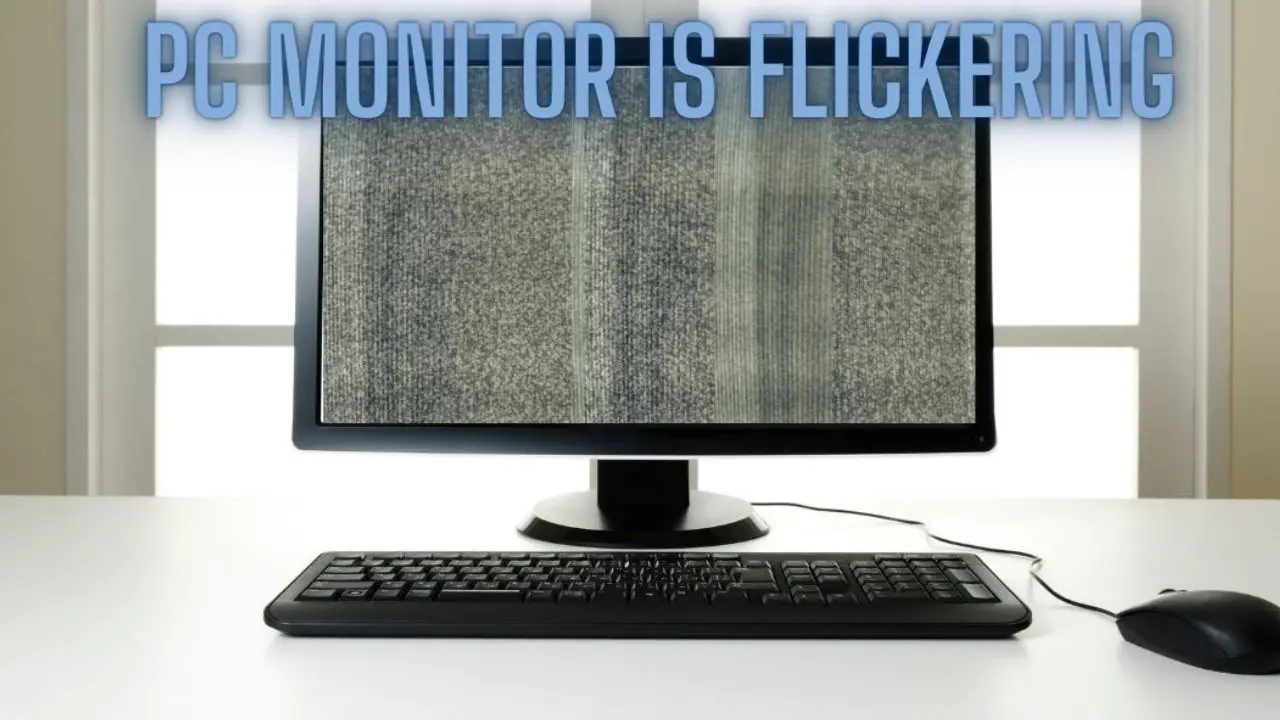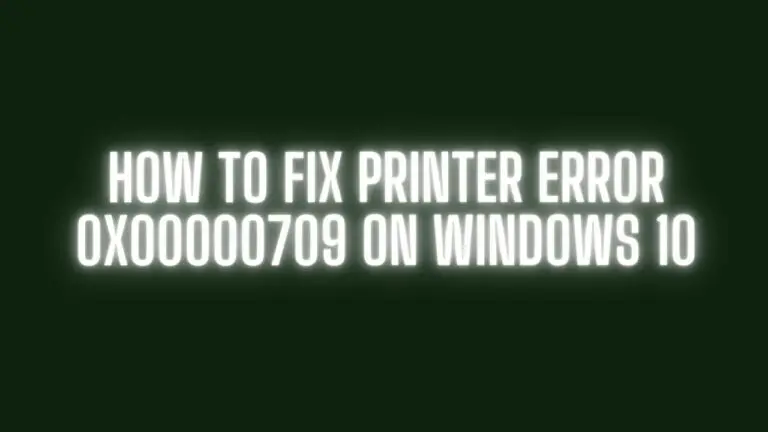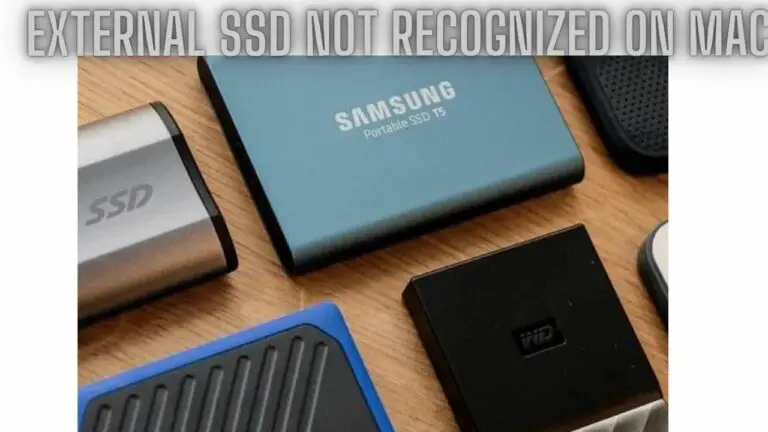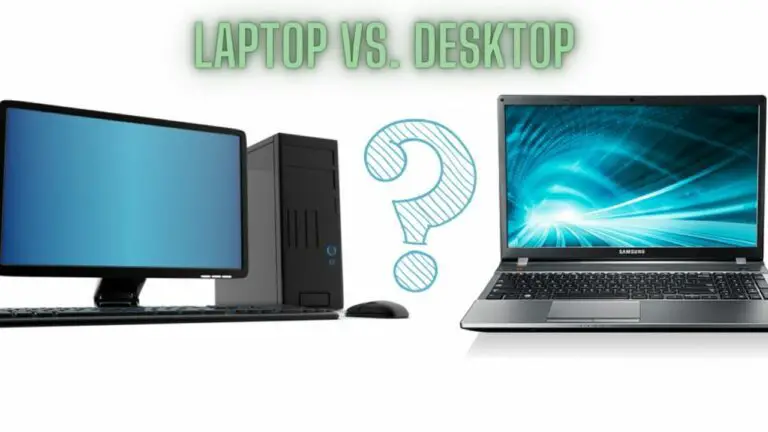PC Monitor is Flickering – Troubleshooting and Solutions
Introduction
Monitor flickering can be a frustrating issue that affects the visual experience while using a computer. Flickering may manifest as rapid and intermittent changes in brightness or color, which can strain the eyes and disrupt productivity. This guide aims to provide solutions for addressing monitor flickering, ensuring a smooth and comfortable viewing experience. By following the troubleshooting steps outlined in this guide, users can identify and resolve the underlying causes of monitor flickering, restoring visual clarity and stability to their computer display.
Check Connections
One of the first steps in troubleshooting monitor flickering is to ensure that all connections between the computer and the monitor are secure and properly connected. Loose or damaged cables can cause intermittent signal interruptions, leading to flickering issues. Follow these steps to check connections:
- Inspect Cables:
- Examine the cables connecting the computer to the monitor, including the power cable, video cable (e.g., HDMI, DisplayPort, VGA), and any additional cables such as USB or audio cables.
- Look for any signs of damage, such as frayed wires, bent connectors, or broken pins. Replace any damaged cables.
- Ensure Secure Connection:
- Make sure that each cable is securely plugged into its respective port on both the computer and the monitor. Ensure that the connectors are inserted fully and firmly seated.
- Try Different Ports:
- If the monitor has multiple video input ports (e.g., HDMI, DisplayPort), try connecting the video cable to a different port on both the computer and the monitor to rule out port-related issues.
- Swap Cables:
- If possible, try using different cables to connect the computer and the monitor. This can help determine if the issue is caused by a faulty cable.
- Check Power Supply:
- Ensure that the monitor is receiving adequate power by checking the power cable connection. If the monitor has a separate power adapter, make sure it is plugged into a functional power outlet.
- Secure Cable Management:
- Organize and secure cables to prevent them from becoming loose or tangled behind the computer or under the desk. Use cable ties or cable management accessories to keep cables tidy.
- Restart Devices:
- After checking and reseating the connections, restart both the computer and the monitor to see if the flickering issue persists. Sometimes, a simple restart can resolve connectivity-related issues.
By thoroughly inspecting and securing connections between the computer and the monitor, users can eliminate potential causes of flickering related to loose or damaged cables. If the flickering issue persists after checking connections, proceed to the next troubleshooting steps to further diagnose and address the problem.
Adjust Refresh Rate
The refresh rate of a monitor refers to the number of times per second that the screen refreshes or redraws its content. A low refresh rate can sometimes cause flickering, particularly when displaying fast-moving images or video. Follow these steps to adjust the refresh rate:
- Access Display Settings:
- Right-click on an empty area of the desktop and select “Display settings” or “Screen resolution” from the context menu. Alternatively, navigate to display settings through the Control Panel or System Preferences, depending on your operating system.
- Open Advanced Display Settings:
- Look for an option to access advanced display settings or monitor properties. This option may be located at the bottom of the display settings window or within a separate menu.
- Check Current Refresh Rate:
- In the advanced display settings or monitor properties window, locate the refresh rate settings for your monitor. The current refresh rate should be displayed alongside the resolution settings.
- Adjust Refresh Rate:
- If the refresh rate is set to a low value (e.g., 60Hz), try increasing it to a higher value. Common refresh rates include 75Hz, 100Hz, or 120Hz, depending on the capabilities of your monitor.
- Select a higher refresh rate from the drop-down menu or use the arrow keys to navigate through available options.
- Apply Changes:
- After selecting the desired refresh rate, click “Apply” or “OK” to apply the changes. The screen may briefly flicker as the refresh rate is adjusted.
- Test the Monitor:
- Once the refresh rate has been adjusted, test the monitor to see if the flickering issue has been resolved. Open a variety of applications and content to ensure that the flickering no longer occurs under different conditions.
- Revert Changes if Necessary:
- If adjusting the refresh rate does not resolve the flickering issue or if the screen becomes unstable at higher refresh rates, revert to the original refresh rate settings.
- Update Graphics Drivers:
- In some cases, outdated or incompatible graphics drivers can affect the monitor’s refresh rate and cause flickering issues. Ensure that your graphics drivers are up-to-date by downloading and installing the latest drivers from the manufacturer’s website.
By adjusting the refresh rate to a higher value, users can potentially mitigate flickering issues caused by low refresh rates. However, it’s important to ensure that the selected refresh rate is supported by both the monitor and the graphics hardware to avoid stability issues. If the flickering problem persists, proceed to the next troubleshooting steps to further diagnose and address the issue.
Update Graphics Drivers
Outdated or faulty graphics drivers can sometimes lead to monitor flickering and other display-related issues. Updating the graphics drivers to the latest version can often resolve compatibility issues and improve overall system stability. Follow these steps to update your graphics drivers:
- Identify Graphics Card Model:
- Determine the make and model of your graphics card. You can usually find this information by right-clicking on the desktop, selecting “Display settings” or “Graphics properties,” and navigating to the “Advanced” or “Properties” tab.
- Visit Manufacturer’s Website:
- Visit the website of the graphics card manufacturer (e.g., NVIDIA, AMD, Intel) to locate the latest drivers for your graphics card model. Look for a “Support” or “Drivers” section on the website.
- Search for Drivers:
- Use the search or navigation tools on the manufacturer’s website to find the drivers specific to your graphics card model and operating system (e.g., Windows 10, macOS, Linux).
- Download Drivers:
- Locate the latest graphics drivers for your operating system and download them to your computer. Make sure to download the correct drivers for your graphics card model and operating system version.
- Install Drivers:
- Once the drivers are downloaded, double-click the installer file to begin the installation process. Follow the on-screen instructions to complete the installation.
- During the installation process, you may be prompted to choose between a standard installation or a custom installation. Choose the standard installation option unless you have specific preferences or requirements.
- Restart Computer:
- After the installation is complete, restart your computer to apply the changes and activate the new graphics drivers.
- Check Display Settings:
- After restarting the computer, access the display settings to verify that the graphics drivers have been successfully updated. Ensure that the correct display resolution and refresh rate are selected.
- Test Monitor:
- Test the monitor to see if the flickering issue has been resolved. Open various applications and content to confirm that the flickering no longer occurs under different conditions.
- Rollback Drivers (if necessary):
- If the updated drivers cause compatibility issues or worsen the problem, you can roll back to the previous version of the drivers. To do this, go to Device Manager, locate your graphics card under “Display adapters,” right-click on it, select “Properties,” go to the “Driver” tab, and choose “Roll Back Driver” if available.
By updating the graphics drivers to the latest version, users can often resolve monitor flickering issues caused by driver compatibility issues or software bugs. If the flickering problem persists after updating the drivers, proceed to the next troubleshooting steps to further diagnose and address the issue.
Change Display Settings
Adjusting display settings can sometimes help resolve monitor flickering issues by optimizing the configuration for your specific setup. Follow these steps to change display settings:
- Access Display Settings:
- Right-click on an empty area of the desktop and select “Display settings” from the context menu. Alternatively, you can access display settings through the Control Panel or System Preferences, depending on your operating system.
- Adjust Resolution:
- In the display settings window, locate the option to adjust the screen resolution. Choose a resolution that is compatible with your monitor’s native resolution and aspect ratio. Avoid using resolutions that are too high or too low for your monitor.
- Change Refresh Rate:
- If your monitor supports multiple refresh rates, consider adjusting the refresh rate to a higher value. A higher refresh rate can reduce flickering, especially when displaying fast-moving content. Choose the highest refresh rate supported by both your monitor and graphics hardware.
- Color Depth and Bit Depth:
- Check the color depth and bit depth settings in the display settings window. Ensure that the color depth is set to the highest available option (usually 32-bit) for optimal color reproduction. Adjust the bit depth if necessary.
- Scaling and Layout:
- Adjust the scaling and layout settings to ensure that text and other visual elements are displayed correctly on the screen. Experiment with different scaling options to find the most comfortable and readable configuration.
- Orientation:
- If you’re using a display that supports rotation (e.g., a monitor with a rotating stand), you can adjust the orientation settings to switch between landscape and portrait modes. Choose the orientation that best suits your workflow and preferences.
- Apply Changes:
- After making adjustments to the display settings, click “Apply” or “OK” to apply the changes. The screen may briefly flicker as the settings are updated.
- Test Monitor:
- Once the changes are applied, test the monitor to see if the flickering issue has been resolved. Open various applications and content to ensure that the flickering no longer occurs under different conditions.
- Revert Changes if Necessary:
- If adjusting the display settings does not resolve the flickering issue or if the screen becomes unstable, revert to the original settings. Experiment with different configurations to find the optimal settings for your setup.
By adjusting display settings such as resolution, refresh rate, color depth, and scaling, users can optimize their monitor configuration to minimize flickering and improve overall visual quality. If the flickering problem persists after changing display settings, proceed to the next troubleshooting steps to further diagnose and address the issue.
Check for Interference
Electromagnetic interference (EMI) from nearby electronic devices or power sources can sometimes cause monitor flickering. Interference can disrupt the signal between the computer and the monitor, resulting in flickering or other display issues. Follow these steps to check for interference:
- Identify Nearby Devices:
- Take note of any electronic devices or power sources located near the monitor and computer. Common sources of electromagnetic interference include fluorescent lights, speakers, routers, wireless devices, and electrical appliances.
- Move Electronic Devices:
- If possible, move electronic devices away from the monitor and computer to minimize interference. Create distance between the monitor and potential sources of interference to reduce the likelihood of signal disruption.
- Power Source Considerations:
- Ensure that the monitor and computer are plugged into separate power outlets or surge protectors to minimize electrical interference. Avoid using extension cords or power strips that may introduce additional interference.
- Check Power Cables:
- Inspect the power cables and adapters for the monitor and computer to ensure they are in good condition and properly shielded. Damaged or improperly shielded cables can be more susceptible to electromagnetic interference.
- Use Shielded Cables:
- Whenever possible, use shielded cables for connecting the monitor to the computer and other devices. Shielded cables help reduce the risk of interference by blocking electromagnetic signals from external sources.
- Disable Wireless Devices:
- Temporarily disable or move wireless devices such as routers, cordless phones, and Bluetooth devices away from the monitor and computer. Wireless signals can sometimes interfere with the display signal and cause flickering.
- Test in Different Locations:
- If interference persists despite minimizing nearby electronic devices, try moving the monitor and computer to a different location within the room. Experiment with different positions and orientations to find a setup that minimizes interference.
- Use Ferrite Beads:
- Consider using ferrite beads or ferrite cores on the monitor and computer cables to suppress electromagnetic interference. Ferrite beads act as passive filters that absorb high-frequency noise and reduce interference.
- Check Grounding:
- Ensure that the monitor, computer, and other electronic devices are properly grounded to prevent electrical interference. Use grounded power outlets and surge protectors to provide a stable electrical connection.
By checking for electromagnetic interference and taking steps to minimize its effects, users can reduce the likelihood of monitor flickering caused by external sources. If interference persists despite these efforts, consider consulting a professional technician or contacting the manufacturer for further assistance.
Test with Different Monitor
To determine whether the flickering issue is specific to the monitor or the computer, testing with a different monitor can help isolate the problem. Follow these steps to test with a different monitor:
- Prepare Alternative Monitor:
- Obtain a different monitor that is known to be in working condition. This could be a spare monitor, a monitor from another computer, or a borrowed monitor from a friend or colleague.
- Connect Alternative Monitor:
- Disconnect the problematic monitor from the computer and power source. Connect the alternative monitor to the computer using the appropriate video cable (e.g., HDMI, DisplayPort, VGA) and ensure that the monitor is securely connected.
- Power On the System:
- Power on the computer and the alternative monitor. Wait for the computer to boot up and the operating system to load.
- Observe Monitor Behavior:
- Once the computer has fully booted, observe the behavior of the alternative monitor. Look for any signs of flickering or abnormal display behavior during normal use.
- Test Various Applications:
- Open various applications and content on the computer to test different scenarios. Pay attention to how the alternative monitor handles different types of content, such as static images, videos, and scrolling text.
- Monitor Different Environments:
- If possible, test the alternative monitor in different environments or locations within the room. Experiment with different positions and orientations to see if the flickering behavior changes.
- Compare Results:
- Compare the behavior of the alternative monitor to the problematic monitor. If the alternative monitor exhibits the same flickering issue, the problem may be related to the computer or its graphics hardware.
- If the alternative monitor does not exhibit flickering, it suggests that the issue is specific to the problematic monitor, such as a hardware defect or compatibility issue.
- Proceed with Troubleshooting:
- Based on the results of the test, proceed with further troubleshooting steps tailored to address either the computer or the monitor. If the issue is with the computer, focus on troubleshooting graphics drivers, settings, and hardware components. If the issue is with the monitor, consider contacting the manufacturer for repair or replacement options.
By testing with a different monitor, users can determine whether the flickering issue is related to the monitor itself or other components of the computer system. This helps narrow down the possible causes and guides the troubleshooting process towards an effective solution.
Inspect Monitor Hardware
Inspecting the hardware of the monitor involves visually examining the monitor for any physical damage or defects that could be causing the flickering issue. Follow these steps to inspect the monitor hardware:
- Power Off the Monitor:
- Turn off the monitor and disconnect it from the power source to ensure safety during inspection.
- Check for External Damage:
- Visually inspect the exterior of the monitor for any signs of physical damage, such as cracks, dents, or scratches. Pay close attention to the screen, bezels, and casing.
- Inspect the Screen:
- Carefully examine the screen surface for any blemishes, smudges, or scratches that may affect display quality. Use a soft, lint-free cloth to clean the screen if necessary, avoiding abrasive materials that could cause further damage.
- Look for Loose Connections:
- Check the connections for the power cable, video cable, and any other cables attached to the monitor. Ensure that all connections are securely plugged in and that there are no loose or damaged connectors.
- Examine the Control Buttons:
- If the monitor has physical control buttons or knobs, inspect them for any signs of damage or malfunction. Press each button to verify that they respond properly and are not stuck or jammed.
- Inspect the Stand or Mount:
- If the monitor is mounted on a stand or arm, examine the mounting hardware for any loose screws or instability. Ensure that the monitor is securely attached to the stand or mount and that it sits level on the desk or surface.
- Check for Overheating:
- Feel the back of the monitor for any excessive heat buildup during normal operation. Overheating can sometimes cause electronic components to malfunction or degrade over time.
- Look for Burn-In or Image Retention:
- Display a solid color or pattern on the screen and inspect for any signs of burn-in or image retention. Burn-in occurs when static images are displayed for extended periods, causing ghosting or permanent discoloration on the screen.
- Inspect Internal Components (Optional):
- If you have technical expertise and are comfortable with disassembly, you may choose to open the monitor casing to inspect internal components such as the power supply, circuit boards, and backlight assembly. Look for any visible signs of damage, corrosion, or loose connections.
- Document Findings:
- Take note of any observations or findings during the inspection process, including any physical defects or abnormalities. Documenting your observations can be helpful if you need to contact the manufacturer or seek professional repair services.
- Contact Manufacturer Support:
- If you identify any physical damage or defects that may be causing the flickering issue, consider contacting the manufacturer for warranty coverage or repair options. Provide detailed information about the issue and any relevant observations from your inspection.
By thoroughly inspecting the hardware of the monitor, users can identify any physical damage or defects that may be contributing to the flickering issue. Addressing these issues early can help prevent further damage and improve the overall reliability and performance of the monitor. If the flickering issue persists despite inspection, consider seeking professional repair or replacement options.
Contact Manufacturer Support
If you’ve exhausted troubleshooting options and the monitor continues to flicker, reaching out to the manufacturer’s support team can provide additional assistance. Follow these steps to contact manufacturer support:
- Gather Information:
- Before contacting support, gather relevant information about the monitor, including the model number, serial number, purchase date, and any warranty information. You may find this information on the monitor’s packaging, user manual, or the monitor itself.
- Visit Manufacturer’s Website:
- Go to the manufacturer’s official website and navigate to the support or contact page. Look for options to contact customer support via email, phone, or live chat.
- Submit Online Support Request:
- Many manufacturers offer online support request forms where you can describe the issue and provide details about your monitor. Fill out the form with accurate information and include any relevant troubleshooting steps you’ve already taken.
- Call Customer Support:
- If you prefer to speak with a representative directly, use the provided phone number to call customer support. Be prepared to provide the same information about your monitor and the issue you’re experiencing.
- Describe the Issue:
- Clearly explain the flickering issue to the support representative, including when it started, how often it occurs, and any troubleshooting steps you’ve already attempted. Provide as much detail as possible to help the support team understand the problem.
- Follow Instructions:
- Follow any instructions provided by the support representative, which may include additional troubleshooting steps or requests for further information. Be patient and cooperative throughout the process.
- Warranty Coverage:
- If your monitor is still under warranty, inquire about warranty coverage for repairs or replacements. Provide proof of purchase if required and follow the manufacturer’s warranty claim process.
- Repair or Replacement Options:
- Depending on the severity of the issue and the warranty coverage, the manufacturer may offer repair services or a replacement monitor. Discuss available options with the support representative and choose the option that best suits your needs.
- Document Communication:
- Keep records of your communication with the manufacturer’s support team, including email correspondence, support ticket numbers, and details of any agreements or arrangements made.
- Follow Up if Necessary:
- If you don’t receive a satisfactory resolution or if the issue persists after repair or replacement, don’t hesitate to follow up with the manufacturer’s support team for further assistance. Be persistent in seeking a resolution to the problem.
By contacting the manufacturer’s support team, you can leverage their expertise and resources to resolve the flickering issue with your monitor. Be proactive in providing information and following their instructions to expedite the resolution process.
FAQS
Why is my PC monitor flickering?
Monitor flickering can be caused by various factors, including loose or damaged cables, incompatible refresh rates, outdated graphics drivers, electromagnetic interference, and even hardware issues like a faulty monitor or graphics card.
How can I determine if the flickering is due to a hardware or software issue?
To diagnose whether the flickering is caused by a hardware or software problem, try connecting your monitor to another computer. If the flickering persists on the second computer, it’s likely a monitor hardware issue. If it stops, it may be a software or driver problem on your original computer.
What is the refresh rate, and how does it affect monitor flickering?
The refresh rate is the number of times per second your monitor refreshes the screen image. If the refresh rate is mismatched between your computer and monitor (e.g., 60Hz vs. 144Hz), it can lead to flickering. Make sure they are set to the same rate in your display settings.
Should I use the highest available refresh rate for my monitor?
Not necessarily. While higher refresh rates can provide smoother motion in gaming and video, your monitor and graphics card need to support it. Using a refresh rate that your hardware doesn’t support can cause flickering and other issues.
How often should I update my graphics card drivers to prevent monitor flickering?
It’s a good practice to check for graphics driver updates regularly, especially when you encounter issues like flickering. Many graphics card manufacturers release updates to address bugs and improve performance. Updating every few months is a reasonable guideline.
What can I do if my monitor’s native resolution is causing flickering?
If using your monitor’s native resolution results in flickering, try using a lower resolution temporarily. Then, download and install the latest graphics drivers for your graphics card. Once updated, you can attempt to switch back to the native resolution.
How can I reduce electromagnetic interference (EMI) causing flickering?
To reduce EMI, consider these steps:
- Move electronic devices like routers, cordless phones, or other potential sources of interference away from the monitor and its cables.
- Use high-quality, shielded video cables to minimize EMI.
- Ensure power cables are not tangled with video cables.
Is flickering always a sign of a faulty monitor or graphics card?
Flickering can be caused by multiple factors, and hardware issues are just one possibility. It’s essential to follow troubleshooting steps to rule out other potential causes, such as loose cables or driver problems, before concluding that your monitor or graphics card is faulty.
Can a software update cause monitor flickering?
Yes, software updates, including operating system or graphics driver updates, can sometimes introduce monitor flickering issues. If you notice flickering after a recent update, try rolling back to a previous driver version or checking for further updates that may resolve the problem.
When should I consider replacing my monitor due to flickering issues?
Consider replacing your monitor if:
- The flickering persists despite trying various troubleshooting steps.
- The monitor is under warranty, and the issue cannot be resolved through support or repair.
- You’ve confirmed that the issue lies with the monitor itself, and it’s not related to cables, graphics drivers, or other external factors.
Conclusion
A flickering monitor can disrupt your work and entertainment, but with the right troubleshooting steps, you can often identify and resolve the issue. Whether it’s a loose cable, driver problem, or EMI interference, following these steps should help you get your monitor back to a stable and flicker-free state.








